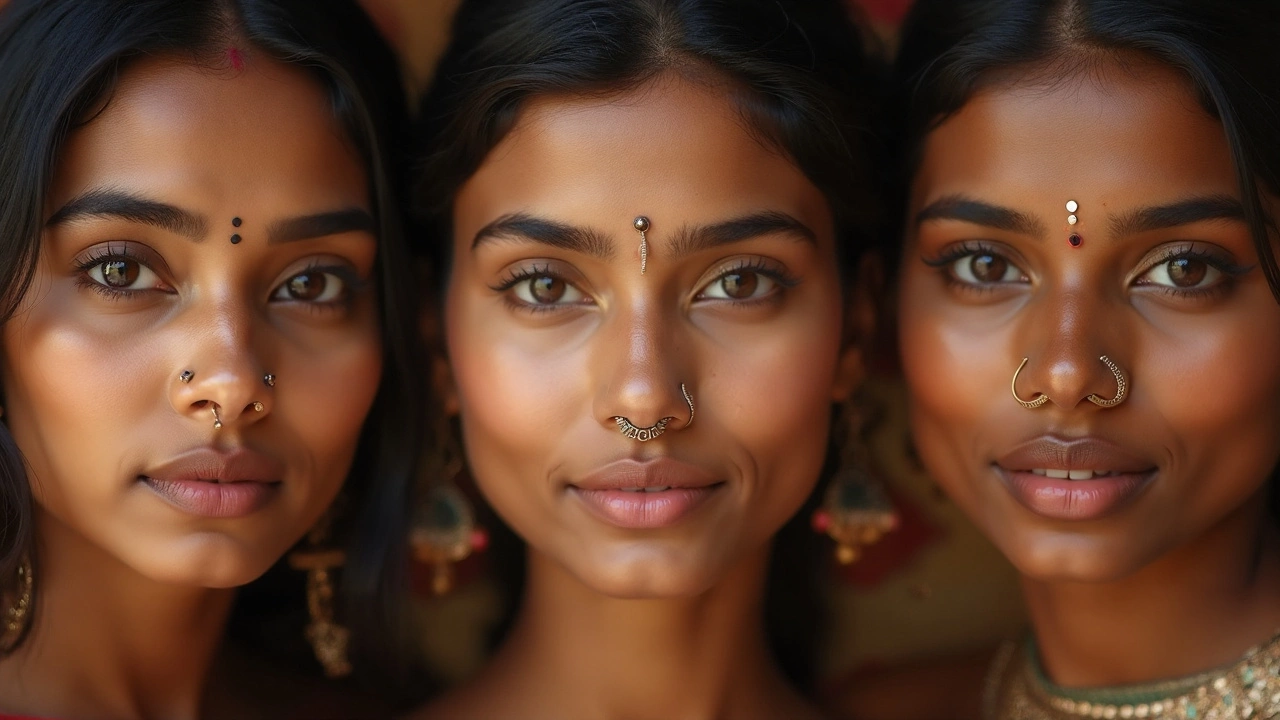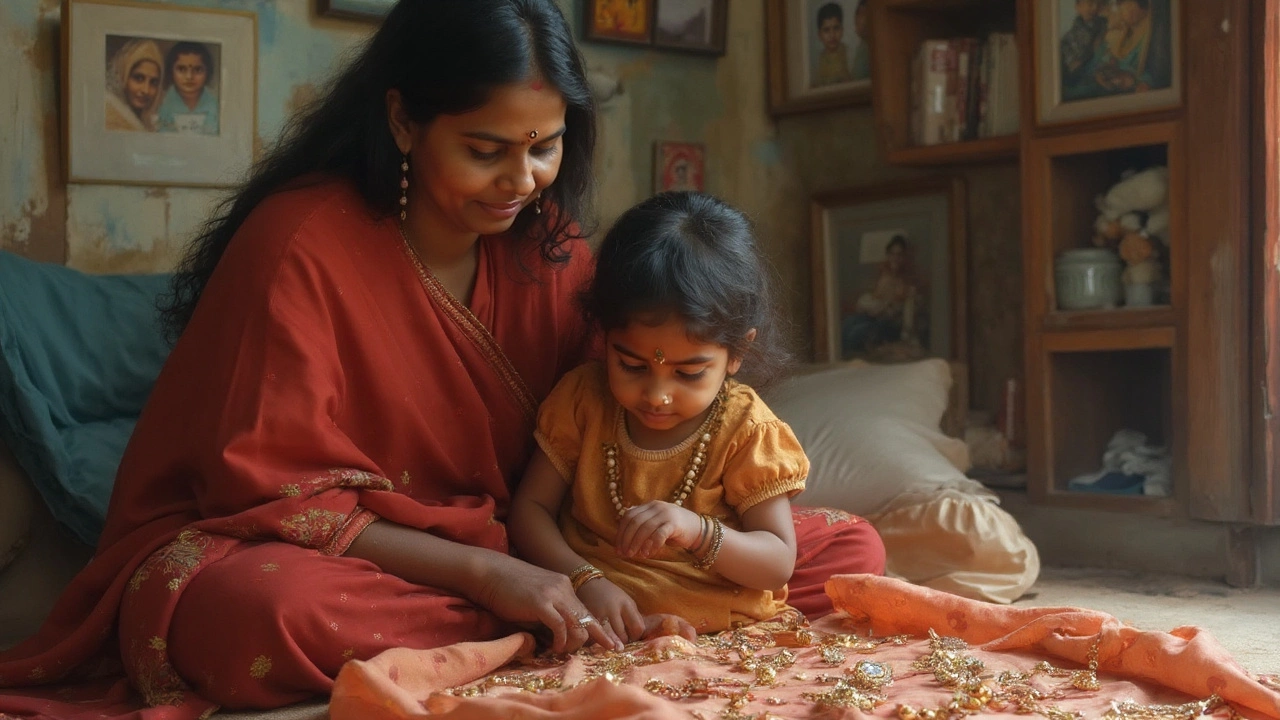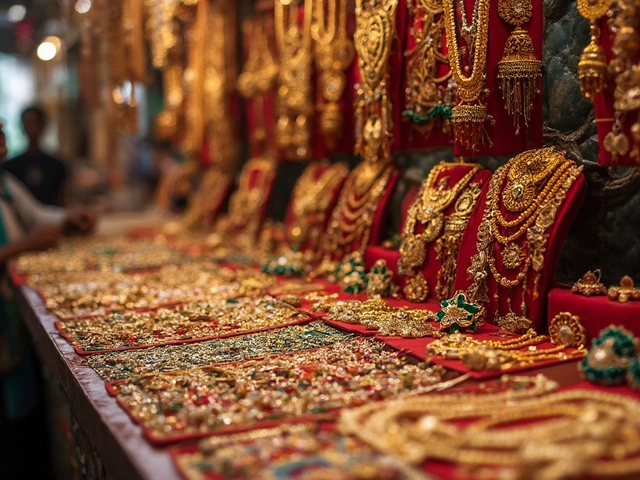
Think a nose pin works for everyone? Instagram makes you believe anyone can pull it off—until you stare in the mirror, twisting a small stud, and something just feels off. Let’s be real: not every fashion statement is one-size-fits-all. Nose pins, with all their sparkling drama and old-school charm, actually sit in a weird spot between universal accessory and fiercely personal choice. There’s this mix of face shapes, skin tones, styles, cultural history, and confidence that goes into making a nose pin look truly you. Ask around, and you’ll hear both bold “yes!” and hesitant “nope, not me” from friends. But what really makes a nose pin suit someone? It’s more than just poking a hole and sliding in a shiny jewel.
The Anatomy of Nose Pin Style: What Actually Matters?
Before you even get to choosing the right size or sparkle, there’s this basic, awkward question: does a nose pin actually fit your face and vibe? There’s no polite way around this—faces come in such wild variety. Some people have sharp, classic lines; others have softer, rounded features. And then there’s skin tone, nose shape, even personality. If you look back in history, in places like India and the Middle East, nose pins went beyond fashion. They had cultural meaning, signaling marriage, social status, or just family tradition. But today, the rules blur. You might spot a student at the University of Sydney rocking a traditional Indian gold nose ring with street wear, or see delicate diamond studs in business meetings downtown.
The first thing that actually matters is face shape. Let’s put faces in buckets: oval, round, square, heart, and long. If your face is oval (think Dua Lipa), you just lucked out—almost any nose pin sits nicely. Got a rounder face? Sharp, angular studs or slim hoops create that contrast and balance things. Square-faced? You’re in luck with rounded, delicate pins—they soften those jawlines. Expect some surprises, too. Some jewelers in Sydney, like those in the Surry Hills boutiques, now offer custom pieces that match not just face shape but also nose size and contour. It’s not about being ‘pretty’ enough—it’s about attention to detail. Jewelers use 3D scans to recommend designs, making sure the pin lies flush against your skin. Tiny details like which nostril you pierce, or the angle, can change everything. A lot of people don’t think about that, but if you’ve ever had an off-center nose stud, you know the pain.
Now, let’s talk color. Skin undertone, not just color, decides what metal or jewel actually looks right. Gold—especially the rich, yellow variety—usually pops on warmer skin tones. Silver and platinum? They’re best friends with cooler, pinkish undertones. Rose gold sits safely in between. A study by the Australian Society of Personal Stylists in 2024 (yep, that’s a thing) found most Australians who loved their nose pins had matched metal to undertone—no exceptions. That punch of match makes a nose pin look intentional, not awkwardly stuck on.
Sometimes, what really makes a nose pin “suit” someone isn’t just physical. It’s about style and self-confidence. Go bold with a giant nose ring—even if it technically “clashes” with your features—if you love it, you’ll wear it in ways nobody else can. Case in point: Billie Eilish breaking every fashion rule with her mixed metals and oversized rings, nose studs included. The takeaway? Sometimes the only rule that matters is “does it feel good on you?”
| Face Shape | Recommended Pin Style | Material/Jewel Best Fit |
|---|---|---|
| Oval | Any style - studs, hoops, rings | Most metals/jewels suit |
| Round | Sharp studs, slim hoops | White gold, platinum |
| Square | Soft, small rounded pins | Yellow gold, colored stones |
| Heart | Minimal studs, tiny hoops | Rose gold, pearls |
| Long | Horizontal bars, bold hoops | Bold colors, larger shapes |

Getting It Right: Real-Life Tips for Rocking (or Avoiding) Nose Pins
Alright, want to know the real test? It’s not staring at celebrities or scrolling style feeds. Instead, pull out your phone, take a selfie, and use a filter or app that lets you ‘try’ on nose pins. You’ll get the fastest reality check—sometimes, you’ll know in two seconds if you love the look or if it just feels ‘off.’ But beyond the obvious trial-and-error, there are a bunch of small, science-backed tips that might surprise you.
First up, consider the actual piercing process. A study by the Australian College of Dermatology in 2023 pointed out that the type of piercing—gun vs. needle—can change not only healing time, but also how the nose pin ends up sitting. Needle piercings heal faster and are less likely to leave a weird bump, which can totally ruin the look (and your confidence). If you want a nose pin to suit you, start with a professional piercer who understands symmetry—and is open to tiny adjustments, not just speed. Don’t be afraid to bring along photos of what you want, even if it sounds embarrassing. The best jewelers want to see your vision before poking any holes.
Allergic reactions aren’t just for fussy jewelry wearers; they’re common. Nickel allergies often make first-time wearers feel like nose pins “just don’t suit them.” In reality, switching to titanium or surgical steel almost always solves the problem. If your nose feels red or irritated after just a few hours, don’t blame your face. Blame the material and swap it out. Confidence comes back fast when pain and swelling are gone.
Now, there’s the maintenance question. Nose pins sound low-key, but cleaning them, especially in the first weeks, matters. If friends or even your mum tells you your nose ‘doesn’t suit’ a pin because it looks crusty or infected—well, that could be true. Daily cleaning with saline and gentle movement keeps both your skin and jewelry looking fresh. A little coconut oil, as recommended by Sydney beauty salons, helps polish away residue and keeps even old pins sparkling.
Worried about work or school rules? Plenty of jobs in Australia now accept discreet nose studs for both men and women, especially if they’re very small or match your skin tone. Magnetic or clip-on nose pins are on the rise for those who don’t want a permanent hole. These look realistic and are perfect for “testing” the look before committing. Just don’t wear clip-ons for sports or swimming—they’ll end up at the bottom of the pool.
If you’re hitting big events—weddings, festivals, or just a Saturday night at The Rocks—temporary fancy pins can match your whole outfit for the day. Local shops in Sydney have started offering custom stick-on gems, so you get the effect without the forever. There’s no shame in using a little fashion tape to keep it secure. If pros do it on TV, why can’t you?
The trend’s changing quick. In 2025, you’re as likely to see a 40-something accountant with a tiny diamond stud as you are a uni student with septum rings. This year’s data from Jewelry Australia Weekly showed a 13% uptick in nose pin sales among people over 35. That blows a hole in the old ‘only for the young’ vibe. The truth is, people of all ages can and do pull off nose pins, with the right style and care. If it fits your personality—and feels right when you look in the mirror—you’re good to go.
- Try different nose pin styles with filters or jewelry shops before deciding.
- Match your pin’s metal to your skin undertone for a natural look.
- Go to a professional piercer who understands how nose pins lie and heal.
- Test for metal allergies and switch to titanium or surgical steel if needed.
- Consider workplace policies, but know that tiny studs are often allowed now.
- Care for your piercing to avoid infection or that weird red bump.
Those details matter much more than your nose size, age, or gender. Even if you think your nose is ‘too big’ or ‘too small,’ the right shape, metal, or even attitude can flip the script so people start asking “Where did you get that?”

Style Across the World: Nose Pins Through Culture and Time
Look back a few decades and nose pins told a story much bigger than trend or style. For example, in India, nose pins (called ‘nath’ or ‘nathni’) date back centuries. They weren’t just for looks—some communities believed they eased childbirth or connected with the nerve points on the left nostril, which Ayurvedic medicine links to female reproductive health. This might sound out there, but in families across Delhi, Pune, or even the Australian-Indian neighborhoods of Parramatta, young women still get their first nose pin as a family event, not just a personal choice. Gold and pearl pins remain popular for weddings—think Priyanka Chopra’s wedding look that broke the internet a few years back.
In the Middle East, ornate gold rings signal status and age, and you’ll spot them on both men and women at traditional events. African tribal communities wear jaw-dropping nose hoops—some so big they nearly reach the lips—as a mark of courage or adulthood. In the West, nose pins first hit the scene in the punk era, screaming rebellion. But by the late 2000s, they’d switched camps, showing up on tech bros, artists, and even politicians. Emma Watson and Zoë Kravitz both wear delicate diamond nose studs with formal gowns, smashing any old stereotype that nose pins “aren’t classy.”
Jump to 2025, and nose pins are a statement of identity, uniqueness, even inclusion. It doesn’t matter if you’re repping your culture, chasing a rebellious vibe, or just want something subtle and pretty—you can find a nose pin for it. A fun fact: The World Gold Council’s latest reports show that India remains the world’s largest consumer of gold nose pins, but Australia’s market is growing at a record pace, fueled by first-gen Aussies mixing personal heritage with modern fashion.
If you’re wondering what specific styles are hot in Sydney right now—look at micro-studs, tiny diamond chips, minimalist gold bars, plus bolder statement hoops for festival season (especially Vivid Sydney or Mardi Gras). Local influencers love layering: nose pin, ear cuffs, maybe a lip ring. But the rule is still the same—as long as you love it, there’s a style that’ll fit. A friend recently told me that her grandmother’s antique gold nose pin, worn during family occasions, feels like a magic amulet. For her, it’s not about “suiting” her—it’s about passing on a story.
In case you’re nervous about fads fading, here’s something solid: a report from Australian Fashion Institute last year confirmed 67% of nose pin wearers saw their jewel as “part of my self-expression,” not just a trend. The numbers keep climbing. If anything, nose pins aren’t going anywhere—they’re becoming part of the personal style starter kit, like sneakers or a favorite watch.
So, does a nose pin suit everyone? Not technically. But if you’re real with yourself about style, care, comfort, and what you want to say—there’s almost always a version out there that feels just right. A small diamond letter, a thin gold hoop, or a wild festival gem—pick the one that makes you feel most like yourself. That’s the version that always fits.


